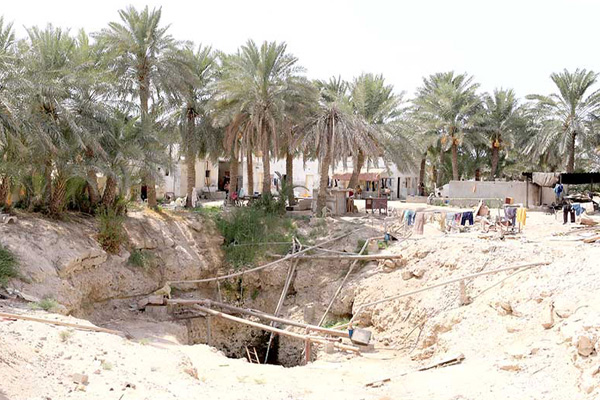
Bid to save 4,000-year-old spring in Bahrain
MANAMA, July 11, 2015
Efforts are underway to save a natural spring, believed to be more than 4,000 years old, from being bulldozed.
Ayn A’ali Howais, in Buri, is located on private property and the landowner has already been banned from developing the site. However, the Northern Municipal Council now wants it to be recognised as a national heritage site so it can be preserved for future generations, reported the Gulf Daily News, our sister publication.
Council chairman Mohammed Bu Hamood said the location’s importance dated back to the Dilmun period and argued heritage status had been granted to less historically important natural springs.
“Bahrain’s other natural springs, whether Al Hakeem or Eskharah near the west coast, are important as they are 1,000 years old and have been named as national heritage sites, but Ayn A’ali Howais – or just Howais – is by far more significant and could support plans to have the A’ali and Buri Royal Burial Mounds listed as World Heritage Sites,” he said.
“It is just too precious to be bulldozed and turned into an investment project.
“Just the fact that it was used in the Dilmun period makes it an interesting location that needs protection.
“The landowner has been stopped from developing it, but since the place is his property we fear he may destroy it to get his licence – unfortunately this has happened with several natural springs in Bahrain.”
The council suspects bodies would have been purified in the spring during Dilmun times, before being entombed in burial mounds nearby in Buri. The council has now referred its recommendation to preserve the site to Works, Municipalities and Urban Planning Affairs Minister Essam Khalaf, who is the minister responsible politically for the Bahrain Authority for Culture and Antiquities (BACA).
A campaigner for the spring’s preservation, former area councillor Nader Al Boori, said that before the land on which it is located was sold off it was a popular meeting spot for local residents.
“I have been told its water channels date back to Dilmun,” he said.
“Obviously, I wasn’t there then so I can’t confirm this, but historians have reflected on it in their poetry and writings that shows it is pre-Islamic, so it is thousands of years old.
“The stone used to secure it is hundreds of years old, I can guarantee that.
“It (the stone) is Islamic, according to top historian and clergyman Shaikh Ibrahim Al Mubarak, and could have replaced the original pagan stone dating back to Dilmun rituals.
“The spring is damaged and there are sewage leaks, but it is still being used for agriculture and could be renovated – it is not too late.
“But it first needs to be fenced, protected and revived for tourists and Bahrainis to enjoy.”
Only last month the Muharraq Municipal Council referred another natural spring, Ain Rayyah in Dair, to Mr Khalaf for consideration as a national heritage site to save it from development. -TradeArabia News Service







